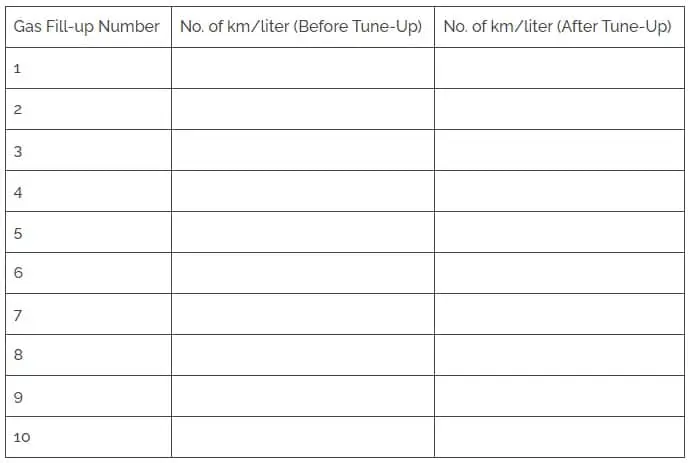In your life, you might encounter stressful situations that require you to make a choice. How will you be able to make informed and objective decisions? This article describes how statistics can help you out of your misery.
Do you have difficulty in deciding about personal issues and concerns? Chances are, you are one of those who have decision-making woes, especially on personal matters that involve your emotions. How can this be resolved?
Using statistical tools may help you in this situation. It will help you reduce the uncertainty associated with decision-making that can affect your way of life. It reduces the guesswork related to decision making.
Below is an example of a personal decision-making scenario that shows the role of statistics in decision-making.
Statistics in Decision Making
As a practicing statistician for many years, I find the experience of using some tools of statistics like the t-test rather satisfying, especially if I can use it to aid me in decision making. A simple addition of points given for the advantages and disadvantages of a choice may be sufficient in some circumstances, but in sometimes, more rigorous analysis of statistical data can provide useful information. Statistics can also verify whether the decision made was a good one.
Example Decision-Making Situation Aided by t-test
One concrete, personal experience that shows the role of statistics in decision making happened several years ago. That decision dilemma occurred in 2005. I bought a vehicle to meet a personal and professional need.

I was then very much concerned about the fuel consumption of my second, probably more accurately, third-hand customized owner-type Toyota jeep I bought from a colleague. The jeep guzzles up about 1 liter of gasoline for barely 4 or 5 kilometers of road covered! I thought that this was something that need immediate attention, so I brought the jeep to the automotive repair shop.
I requested the mechanic for a major engine overhaul, where the engine block has to be re-bored to make way for a cylindrical metal sleeve. The metal sleeve narrows the opening where the piston is fired up and down by the series of explosions that occur in the combustion chamber.
However, this engine-related jargon can confound many people unfamiliar with these terms. The whole tune up process aimed to eliminate loose compression of fuel in the engine that leads to a minuscule distance to fuel ratio.
Curiosity struck me whether my decision to spend for tune-up mattered. Did the number of kilometers covered by the old jeep significantly improve after the tune up?
Armed with a knowledge of the t-test, I sought to find out the answer to this question using the monthly monitoring data I gathered on the total number of kilometers traveled for one gas up. I religiously recorded the number of liters of gasoline on the receipt each time I visit the gasoline station.
I encoded these data in MS Excel, anticipating the t-test computation I will make. I intend to compare the gasoline consumption of my jeepney before and after the tune-up.
Here’s how the simple table where I logged the data on gas consumption looked.

The km/liter is computed by simply dividing the total number of kilometers traveled by the number of liters for one gas fill-up.
Example:
100 km/10 liters = 10 km/li
I logged the gasoline consumption of my jeep for several months after the tune up. I then used this data in comparing the jeep’s performance, before and after the tune-up, waiting until I have gathered data for at least ten gas fill-ups.
Result of the t-test Analysis
So, did I find a significant difference in gasoline consumption before and after the tune-up? The answer is “Yes”. Indeed, the kilometer covered per liter significantly increased almost twice the previous gasoline consumption. It can now run at 8 or 9 kilometers per liter of petrol. That is definitely a better performance than the last 4 kilometers of the road traveled per liter of gasoline. My investment somehow paid off.
This information helped me decide whether I should keep the jeep after having it tuned up in the automotive repair shop. I expected the jeep should cover over 8 or 9 kilometers because new vehicles run this distance with the air conditioner on. The jeep does not have any air conditioning in it. When the climate is hot, it is hot inside the jeep and when the surrounding environment is cold, well, of course, the jeep is cool too.
My Decision After the t-test Analysis
I gave the jeep up, sold it and bought a newer, diesel-powered Mitsubishi pickup truck that runs at 11 kilometers per liter of diesel with the air conditioning on. That was five years ago, and my pickup truck still runs like new as I make sure the engine oil is regularly changed to keep the parts within at its best working condition, thus efficiently running.
Maybe I should subject it again to a t-test in the coming months to see if I still have to keep it or consider buying a new one. Such is the role of statistics in decision-making.
© 2012 December 2 P. A. Regoniel | Updated December 13, 2022



How abt roles of statistics in guidance and counselling
Outline the roles of business statistics in decision making process
mention the importances specifically
Dear tatary, as the article illustrates, numerical information to represent options aids decision making.
may you mention for me the importance of statistics in decision making